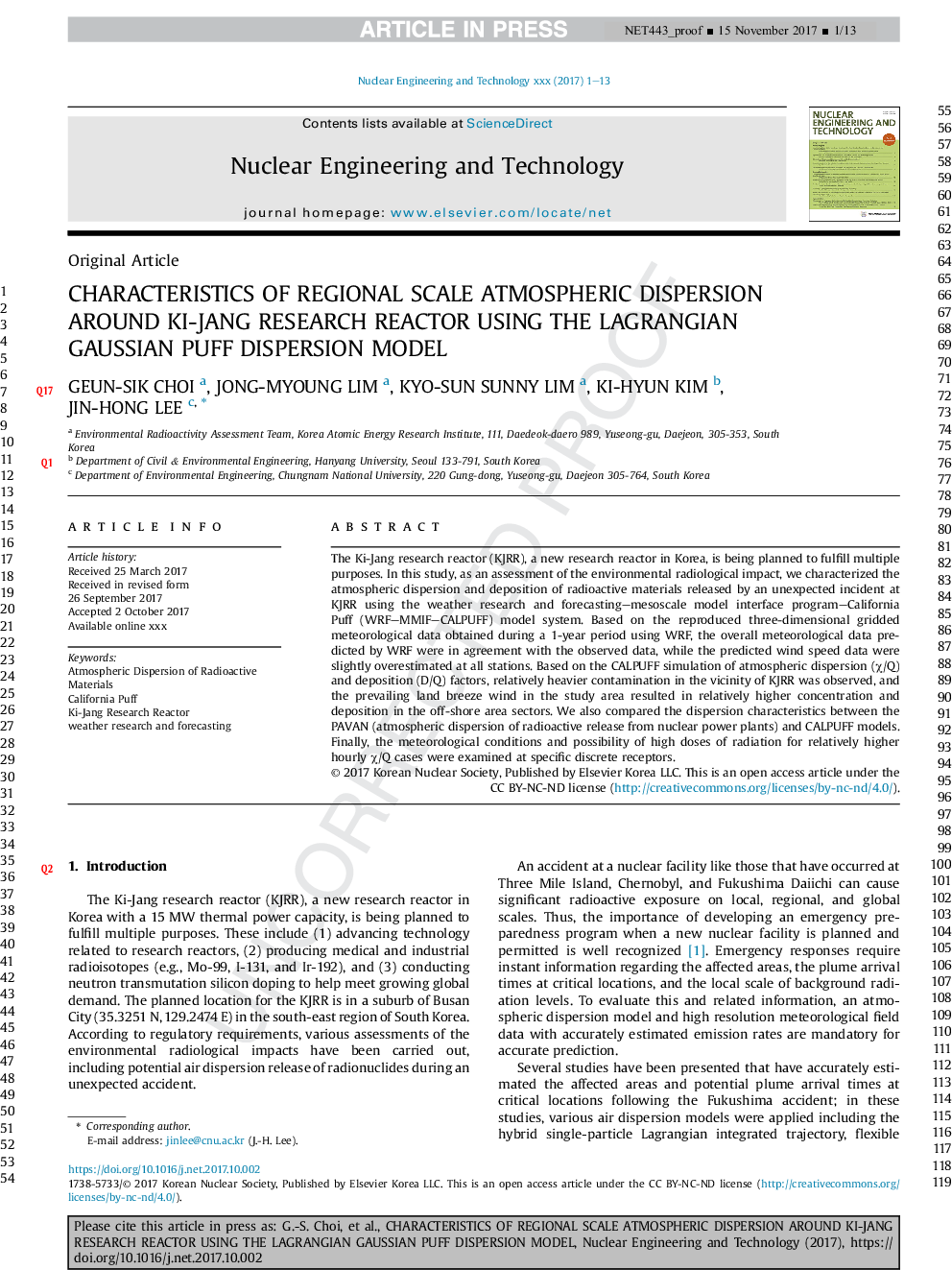| Article ID | Journal | Published Year | Pages | File Type |
|---|---|---|---|---|
| 8083862 | Nuclear Engineering and Technology | 2018 | 13 Pages |
Abstract
The Ki-Jang research reactor (KJRR), a new research reactor in Korea, is being planned to fulfill multiple purposes. In this study, as an assessment of the environmental radiological impact, we characterized the atmospheric dispersion and deposition of radioactive materials released by an unexpected incident at KJRR using the weather research and forecasting-mesoscale model interface program-California Puff (WRF-MMIF-CALPUFF) model system. Based on the reproduced three-dimensional gridded meteorological data obtained during a 1-year period using WRF, the overall meteorological data predicted by WRF were in agreement with the observed data, while the predicted wind speed data were slightly overestimated at all stations. Based on the CALPUFF simulation of atmospheric dispersion (Ï/Q) and deposition (D/Q) factors, relatively heavier contamination in the vicinity of KJRR was observed, and the prevailing land breeze wind in the study area resulted in relatively higher concentration and deposition in the off-shore area sectors. We also compared the dispersion characteristics between the PAVAN (atmospheric dispersion of radioactive release from nuclear power plants) and CALPUFF models. Finally, the meteorological conditions and possibility of high doses of radiation for relatively higher hourly Ï/Q cases were examined at specific discrete receptors.
Keywords
Related Topics
Physical Sciences and Engineering
Energy
Nuclear Energy and Engineering
Authors
Geun-Sik Choi, Jong-Myoung Lim, Kyo-Sun Sunny Lim, Ki-Hyun Kim, Jin-Hong Lee,
